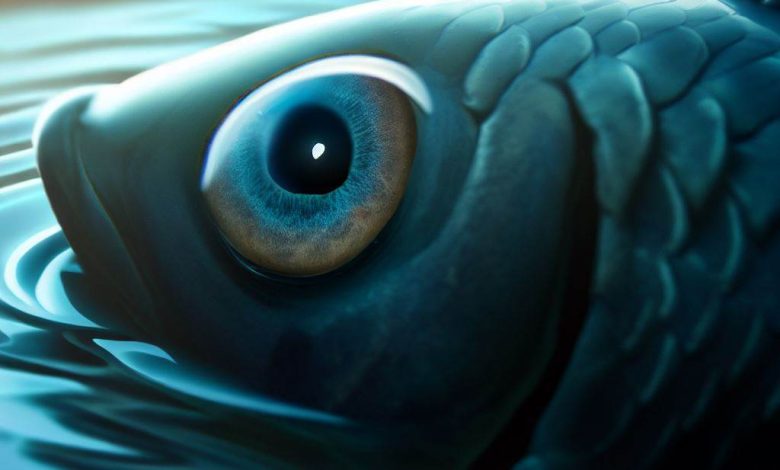Can Fish See Water?

Have you ever wondered if fish can actually see the water they swim in all day long? It’s a curious thought. Today, we’re going to take a deep dive into the fascinating world of fish vision and explore their unique abilities to perceive their underwater environment. Get ready to be amazed as we unravel the mysteries of how fish see and gain a whole new perspective on these remarkable aquatic creatures.
Fish have evolved to perceive and navigate their underwater environment, which includes their ability to see water. However, it’s important to note that fish may not be consciously aware of water in the same way humans are. Water is their natural habitat, and they have adapted their visual systems to function optimally in that environment.
The Visual Perception of Fish
Just like us humans and other animals, fish rely on their vision to navigate and find food. But here’s the interesting part—fish have some pretty cool adaptations that make their visual system perfectly suited for their watery home.
Their eyes work in a way that’s quite different from ours, and understanding the basics of fish vision will give us a glimpse into how they perceive the underwater world around them.
Fish eyes aren’t so different from ours in structure, but they’ve evolved special features that allow them to excel underwater. Their lenses are typically rounder, which helps them focus better in water.
Additionally, fish have a higher concentration of rod cells in their retinas, which are responsible for detecting movement and helping them navigate in low-light conditions. This adaptation gives them a leg up when it comes to spotting prey and avoiding predators, even in the murkiest of waters.
Also Read: How Do Fish Have Sex
Do Fish See Water Differently?
Now, let’s address the big question—can fish actually see the water they live in? The short answer is not quite like we do. You see, for us humans, water appears transparent, but fish perceive it differently. They have finely tuned vision that allows them to detect subtle changes in water movement, temperature, and clarity.
To them, water is more than just a transparent medium—it’s a dynamic environment filled with visual cues that help them thrive.
Fish have evolved the ability to perceive polarized light, which is light that vibrates in a single plane. This unique adaptation helps them navigate by detecting patterns in polarized light caused by objects underwater. It’s like they have a built-in compass that guides them through their watery world.
Also Read: Is Raw Fish Good for You? Benefits and Risks
Fish Vision: Adaptations for Underwater Life
Now, imagine trying to find your way in a world where visibility changes with the ebb and flow of the tides. Well, our fishy pals have mastered that challenge with some jaw-dropping visual adaptations.
But wait, there’s more! Fish have also fine-tuned their color vision to suit their aquatic habitat. While we humans enjoy a vast range of colors, fish typically see a more limited spectrum. They excel at distinguishing between shades of blue and green, which are dominant hues in their watery world.
This adaptation helps them blend in with their surroundings and spot potential mates or rivals, kind of like fishy fashionistas showing off their stylish scales.
Navigating the Aquatic World
Have you ever tried finding your way in a dense forest without any landmarks? It’s not easy, right? Well, fish face a similar challenge underwater, but they’ve become masters at navigating their liquid world.
They use visual cues, such as rocks, corals, and plants, to orient themselves and find their way back to their favorite hiding spots or breeding grounds.
Fish also rely on their excellent visual memory to remember landmarks and create mental maps of their territory. These mental maps help them locate food sources, avoid obstacles, and even find their way home after long migrations. It’s like they have an internal GPS that guides them through their underwater adventures.
The Colorful World Underwater
Let’s dive deeper into the world of colors beneath the water’s surface. While fish may not see the full spectrum of colors as we do, they have their own unique perspective on underwater hues.
Fish are particularly attuned to shades of blue and green, which dominate their aquatic surroundings. These colors are important for camouflage, communication, and mate selection.
Fish have evolved the ability to detect subtle variations in shades and patterns, allowing them to blend into their environment or stand out when necessary. For example, the vibrant colors of a male betta fish play a crucial role in attracting a mate, while the intricate patterns on a clownfish help it camouflage among the swaying tentacles of a sea anemone.
Interestingly, some fish even have the ability to change their coloration. Take the chameleon-like abilities of the octopus, for instance. This remarkable creature can alter the pigments in its skin to match its surroundings, providing an additional layer of camouflage and protection.
Exploring the Deep-Sea Mysteries
As we descend into the depths of the ocean, we encounter an entirely different world with its own set of challenges and adaptations. Deep-sea fish inhabit an environment where sunlight barely reaches, presenting unique visual obstacles. Yet, these extraordinary creatures have found ways to thrive in the darkness.
Many deep-sea fish have developed large, sensitive eyes that can capture the faintest traces of light. Some even possess bioluminescent organs, which allow them to produce their own light to attract prey or communicate with others in the depths. These adaptations are essential for their survival in an environment where visibility is extremely limited.
Scientists continue to explore the mysteries of deep-sea fish vision, using advanced technologies to study their eyes, behavior, and interactions. By uncovering the secrets of these enigmatic creatures, we gain valuable insights into the incredible adaptations that enable life to thrive in even the most challenging environments.
A Window into Evolution and Future Research
The study of fish vision not only fascinates us but also provides a window into the process of evolution. Through millions of years of adaptation and natural selection, fish have developed remarkable visual capabilities that are perfectly suited to their underwater habitats.
By understanding the intricacies of fish vision, scientists gain insights into the broader mechanisms of evolution and how species adapt to their specific environments.
As technology advances, researchers are able to delve even deeper into the world of fish vision. High-resolution imaging techniques, underwater cameras, and sophisticated behavioral studies offer new avenues for exploring the intricacies of fish vision and expanding our knowledge of their remarkable abilities.
Conclusion
From the vibrant colors of coral reefs to the mysterious depths of the ocean, fish vision unveils a world of wonder and adaptation. While fish may not see water in the same way we do, their visual capabilities are finely tuned for life beneath the surface.
Their unique adaptations, from polarized light detection to remarkable color perception, enable them to navigate, communicate, and thrive in their watery realms.
As we continue to unravel the secrets of fish vision, we gain a deeper appreciation for the incredible diversity of life on our planet. So, the next time you gaze into an aquarium or catch a glimpse of a fish in a river, take a moment to marvel at their extraordinary visual abilities and the mesmerizing world they inhabit. It’s a reminder that there is always more to discover, both above and below the water’s surface.





